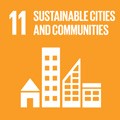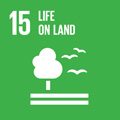- Docente: Gianluca Vignaroli
- Credits: 6
- SSD: GEO/03
- Language: Italian
- Teaching Mode: Traditional lectures
- Campus: Bologna
- Corso: Second cycle degree programme (LM) in Geology for Sustainable Development (cod. 6050)
-
from Feb 24, 2025 to May 28, 2025
Learning outcomes
The course aims to provide students with methods and tools to describe, analyse, and interpret tectonic structures that develop in high-crustal conditions (brittle rheologic regime). Students will learn about the processes that govern the evolution of these structures in both space and time. They will acquire the knowledge of modern theoretical and experimental Structural Geology relevant to the understanding of factors controlling the localisation and the activation-deactivation of fault zones. Research aspects will be combined with applied aspects of Structural Geology (e.g., mitigation of geological risks, assessment of georesources, relationship between tectonics and landscape evolution), contributing to the achievement of the learning outcomes of the Master's Degree. The course will combine traditional in-class lectures with the reading and analysis of scientific articles.
Course contents
- Introduction: the study of brittle tectonic context, its implications and applications.
- Recall of disjunctive deformation mechanics: terminology.
- Fault zones as a natural laboratory to study the style of brittle deformation. Anatomy of fault systems and networks of associated secondary structures. Fault system in plan and section: from geometric analysis to kinematic analysis.
- Evolution in space of fault zones: geometry, growth and coalescence; localization and delocalization of deformation, activation/reactivation/deactivation of fault zones. Paleostress analysis.
- Evolution in time of fault zones: rejuvenation of the structural fabric due to polyphasic reactivation; main dating techniques of syn-kinematic mineralization.
- Fault zones and fluid circulation: from the hydrodynamic regime of the crust to the permeability of a fault zone; structurally controlled permeability: vein-fault relationships.
- Evolution of fault zones and its implications:
- seismic risk (the characteristic earthquake; long-term deformation of seismically active structures; active and capable faults)
- landscape modeling: the regional and local control of upper crustal deformation on topography
- location of mineralization of particular interest for society.
Readings/Bibliography
- Bibliography (papers, websites) given during the course
- Lesson material (slides)
Teaching methods
The teaching methods include frontal teaching, classroom exercises, and seminars.
Assessment methods
Students will be evaluated on contents from the frontal teaching and classroom exercises.
Teaching tools
Classroom multimedia devices.
Virtuale
Office hours
See the website of Gianluca Vignaroli
SDGs



This teaching activity contributes to the achievement of the Sustainable Development Goals of the UN 2030 Agenda.
